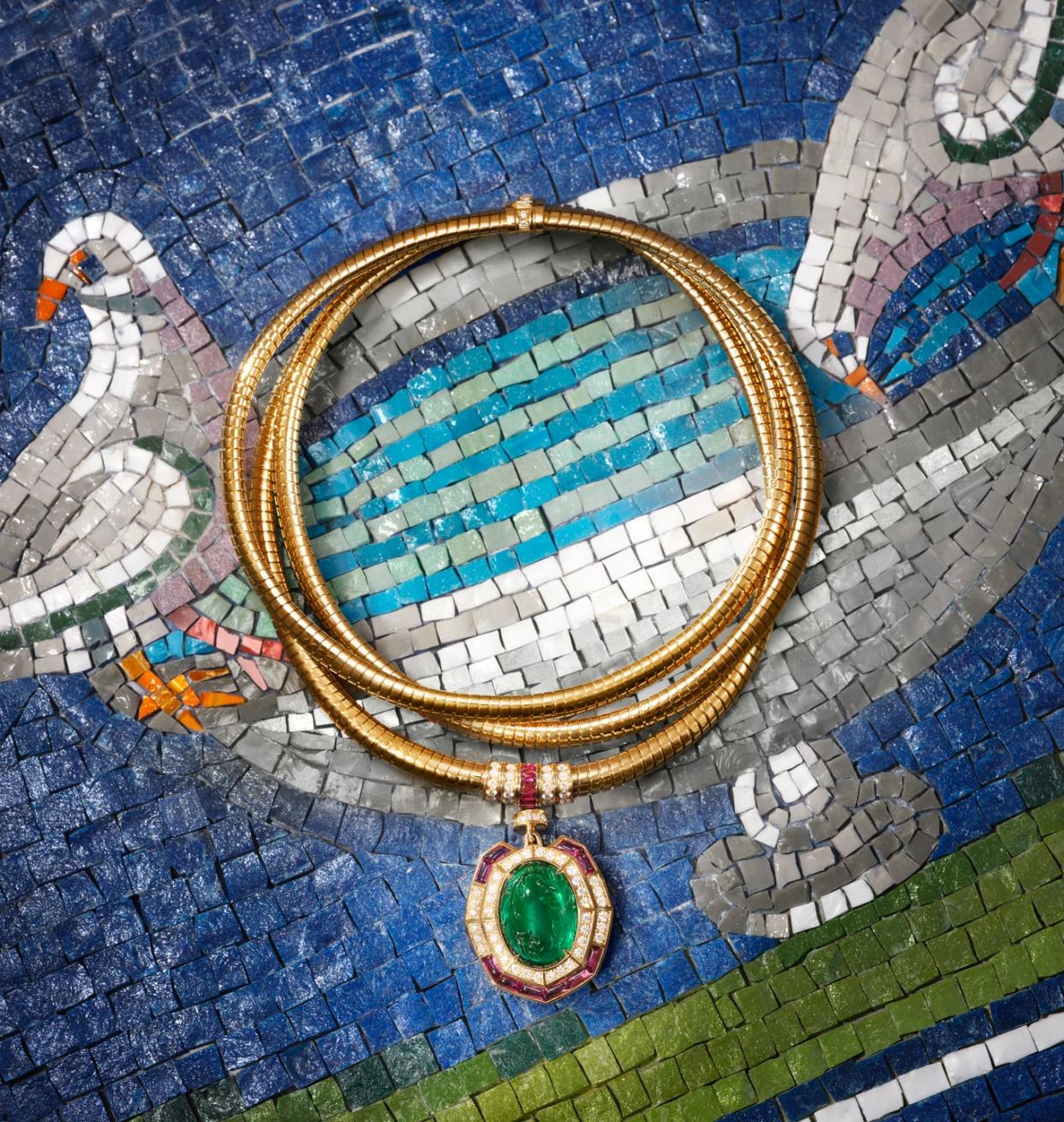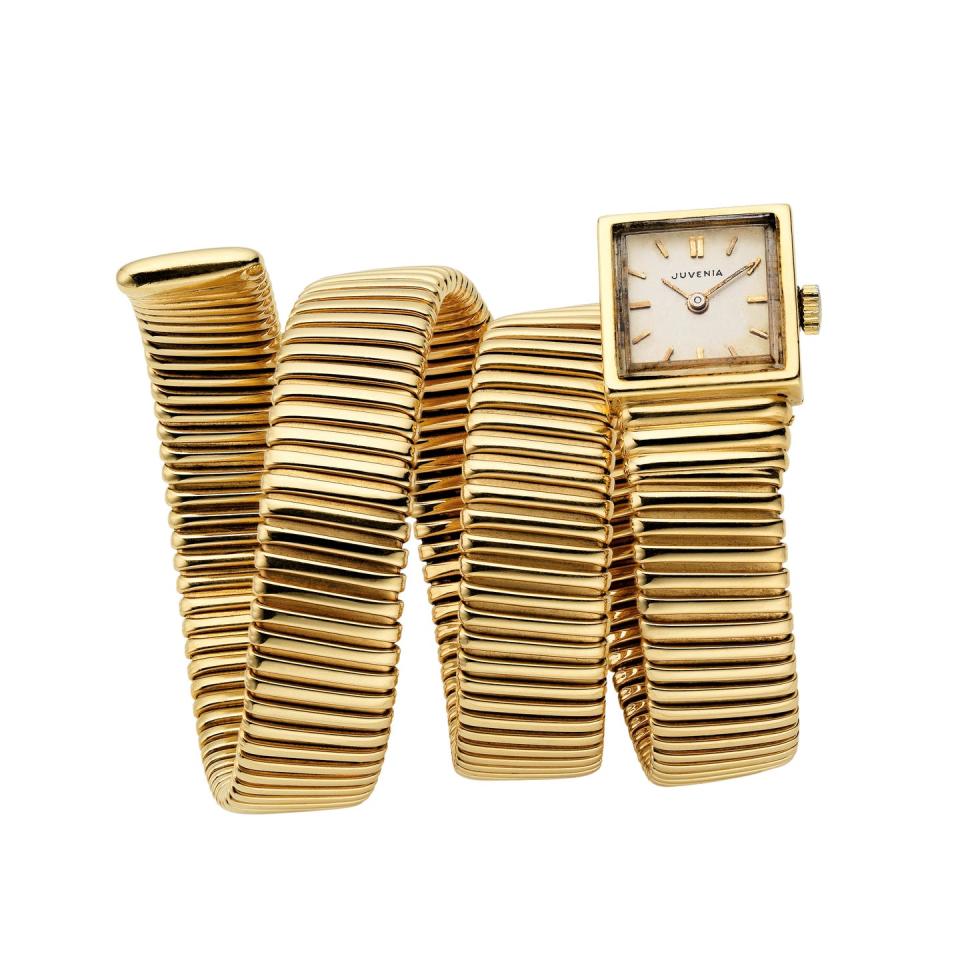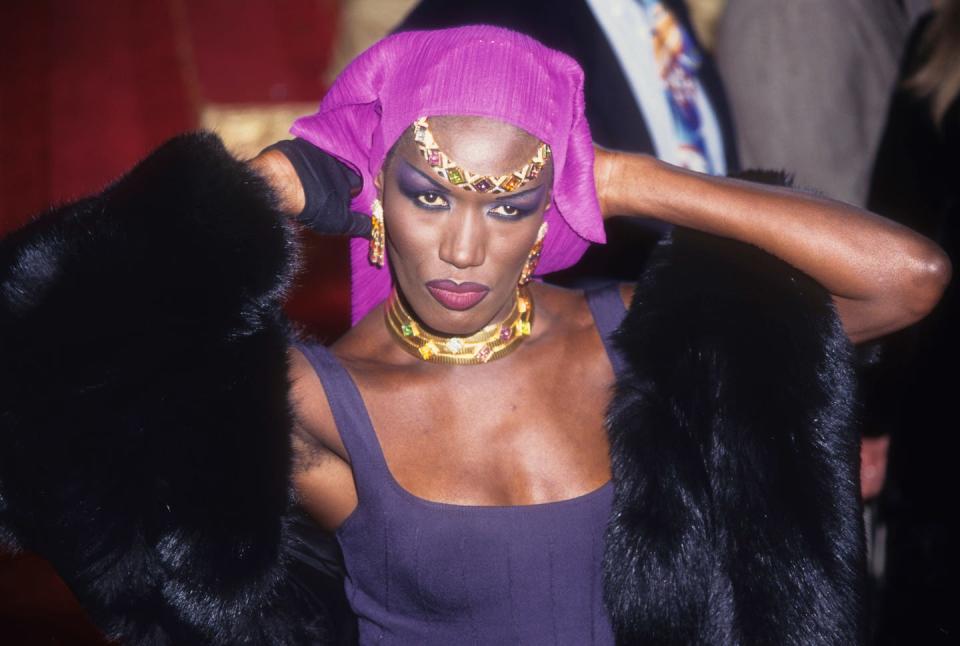This Is the Story of How a Gas Pipe Became a Jewelry Legend

Sometimes a crisis can be a boon for creativity—a necessity-is-the-mother-of-invention kind of thing. In jewelry history this truth is most evident in pieces designed during the 1940s. Platinum had been banned for decorative use because of the war effort, which is why yellow gold dominated. The availability of precious stones became limited as trade routes did, which resulted in the rise of the semiprecious. And with images of tanks seen in newsreels every day, the bejeweled geometry of Art Deco gave way to a new aesthetic: bold, high-wattage pieces that telegraphed strength in beauty. These are the kind of pieces you’ve seen on the cinema stars of the era, but they were largely born out of the reality of scarce resources—and of imaginations fueled by the need to innovate.
This is the tale told by tubogas. The distinctive form first arose in industry; it was named for tubes made from articulated bands used to transport pressurized gas in the 1920s. But then history transformed it into a jewel. By the ’40s gold tubogas began to appear in designs from several houses, and in 1948 the first Bulgari Tubogas watch entered the market. Is industrial too harsh a word to use for a concept that now lays the foundation for a 31.07-carat cabochon emerald High Jewelry necklace? Perhaps to some. To others such roots are a superpower, a testament to human imagination and innovation, the ability to see beauty in the everyday and elevate the quotidian to decorative art. (It worked: Research auction prices for Bulgari Tubogas jewelry.)

That first experiment with tubogas led to a solid decade of design inquiry for Bulgari, and by the 1970s it had evolved into a house motif, used with those iconic Monete coins and cabochon stones. By the 1980s the tubogas technique was a Bulgari signature. And this fall a new collection will be presented. The bracelets and necklaces are all in yellow gold, though there is one style in trigold and another with pavé diamond studs. They are unadulterated tubogas; the method and material reign supreme.
“It’s an extraordinary technique,” says Bulgari jewelry creative director Lucia Silvestri. “It represents the intersection of industrial functionality and artistic elegance. And despite its modernity, the craftsmanship component remains a key feature at the core of this signature.” Silvestri herself wears several Bulgari Tubogas pieces, mixing and layering them with vintage jewels and the Monete coin collections. “Our heritage is a great source of inspiration. We have ventured far with the tubogas technique, which has proved to be an incredibly versatile canvas, whether through the matching of various gold finishes, the introduction of flexible steel, or the use of colored gems. The success of it all led to the launch of Bulgari Tubogas, a collection where age-old tradition seamlessly merges with forward-thinking innovations.” Ones, to be clear, you can wear right now.
The Jewelry Holy Grail Pipeline

The debut of the Bulgari Tubogas watch coincided with the birth of another OG: the Serpenti.

Gems from the Stars and Stripes collection are still highly coveted. This bracelet just sold at Christie’s for $69,300.

One radical idea lays the foundation for another: the triple combination of yellow, rose, and white gold.

What is the formula for red carpet jewelry ambition? A healthy appetite for risk, plus a fierce attitude to match. Grace Jones gave a master class at the L.A. premiere of Evita.
This story appears in the September 2024 issue of Town & Country. SUBSCRIBE NOW
You Might Also Like


